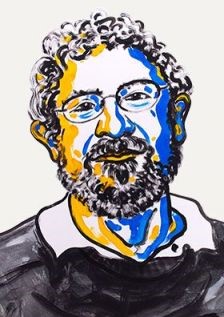 Michael Kosterlitz, who carried out doctoral research at Brasenose College between 1966 and 1969, was yesterday named a Nobel Laureate in Physics for his pioneering work revealing the secrets of exotic phases of matter.
Michael Kosterlitz, who carried out doctoral research at Brasenose College between 1966 and 1969, was yesterday named a Nobel Laureate in Physics for his pioneering work revealing the secrets of exotic phases of matter.
Professor Kosterlitz now works at Brown University in America, and shares the prize with Professor Duncan Haldane of Princeton University, and Professor David Thouless of the University of Washington.
The Royal Swedish Academy of Sciences, who awards the prizes, explained “This year’s Laureates opened the door on an unknown world where matter can assume strange states. They have used advanced mathematical
methods to study unusual phases, or states, of matter, such as superconductors, superfluids or thin magnetic films. Thanks to their pioneering work, the hunt is now on for new and exotic phases of matter. Many people are hopeful of future applications in both materials science and electronics.
The three Laureates’ use of topological concepts in physics was decisive for their discoveries. Topology is a branch of mathematics that describes properties that only change step-wise. Using topology as a tool, they were able to astound the experts. In the early 1970s, Michael Kosterlitz and David Thouless overturned the then current theory that superconductivity or suprafluidity could not occur in thin layers. They demonstrated that superconductivity could occur at low temperatures and also explained the mechanism, phase transition, that makes superconductivity disappear at higher temperatures.
In the 1980s, Thouless was able to explain a previous experiment with very thin electrically conducting layers in which conductance was precisely measured as integer steps. He showed that these integers were topological in their nature. At around the same time, Duncan Haldane discovered how topological concepts can be used to understand the properties of chains of small magnets found in some materials.
We now know of many topological phases, not only in thin layers and threads, but also in ordinary three-dimensional materials. Over the last decade, this area has boosted frontline research in condensed matter physics, not least because of the hope that topological materials could be used in new generations of electronics and superconductors, or in future quantum computers. Current research is revealing the secrets of matter in the exotic worlds discovered by this year’s Nobel Laureates”
Commenting on the announcement, Dr Chris Timpson (Tutor in the Philosophy of Physics) said: “Professor Kosterlitz’s work is a wonderful example of the emergence of simplicity of form and of mathematical beauty from what would seem to be the extraordinarily untameable complexity of the interactions of microscopic quantum matter”. Principal of Brasenose, John Bowers, added: “We are all delighted to hear of the richly deserved Nobel Prize. It was wonderful to be able to announce such wonderful news while welcoming our graduate and undergraduate Freshers. It is a source of great pride for the college and will serve as an inspiration for future generations of students.”
Brasenose College warmly congratulates Professor Kosterlitz on this extraordinary achievement.
Read more about Physics at Brasenose College.
